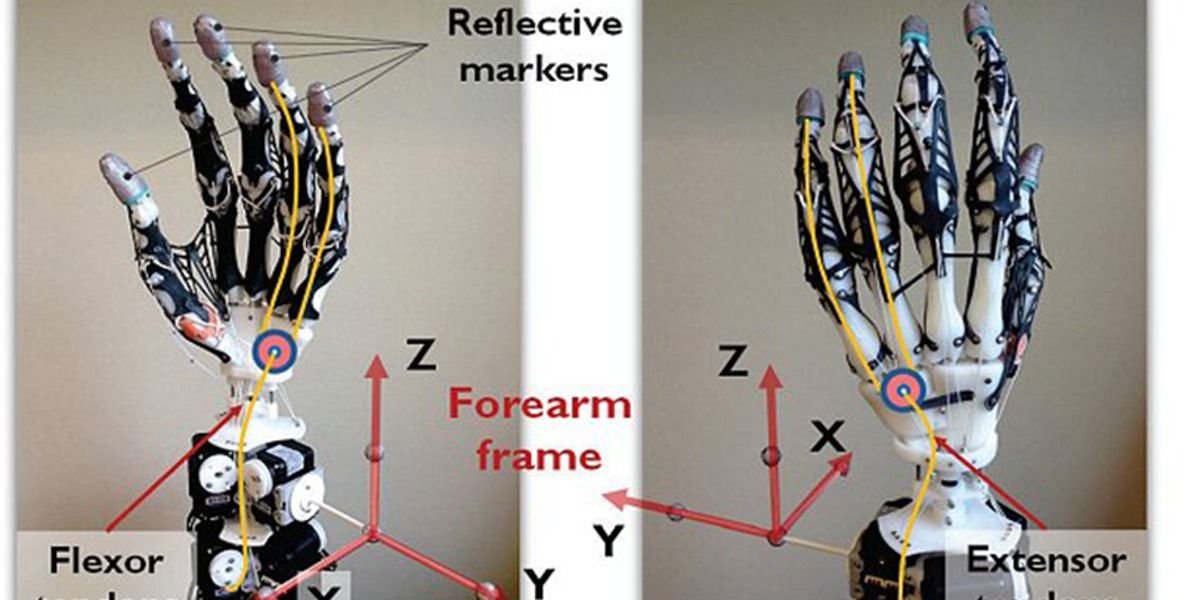Feb 20, 2016
Robot playing Violin
Posted by Shailesh Prasad in categories: media & arts, robotics/AI
Share This Video TO Your Friends Also
Toyota have unveiled a new robot that can play the violin.

Share This Video TO Your Friends Also
Toyota have unveiled a new robot that can play the violin.
Once strictly an extremely expensive tool used only by law enforcement and the military, thermal cameras are now accessible to anyone with a smartphone and a $250 accessory. But starting with Caterpillar’s new rugged S60, thermal imaging sensors are starting to be built right into smartphones.
The FLIR ONE thermal camera started life as a bulky case for the iPhone 5, but was eventually streamlined into a compact dongle that connected to the microUSB or Apple Lightning port on the bottom of iOS or Android smartphones. With the new CAT S60 smartphone, however, the Lepton sensor that allows FLIR cameras to see in total darkness has finally been integrated into the device itself, alongside its standard rear camera.

Rapidly advancing robot appendages are in vogue lately, and they’re going to change how we do everything.
When it comes to robot design, there are the pragmatists and the biomimetics. The pragmatists will design a robot that efficiently carries out its designated function without much worry about what the finished product looks like. As long as it can complete its repetitive task day-in and day-out, who cares about the cosmetics? An industrial robot arm that holds a welding torch, for example, isn’t much of an “arm” at all, but rather something that could easily be mistaken for a sci-fi villain.
Continue reading “Scientists In Washington Have Created the Most Lifelike Robotic Hand Yet” »
This is a good baseline around common known issues — the real problem is cyber terrorists (as I call them) learns from each attack they instigate and like an artist, they constantly are fine tuning their own skill. So, the attacker’s approach and execution may be done one way, and by the next attack they can easily have changed their whole attack model completely which makes it very cumbersome for experts to trace at times. If we believe this is bad now; wait until AI is more widely available and adopted. Or, Quantum ends up in the hands of these guys.
Cybercrimes in today’s technologically advanced society have become much more sophisticated and progressive. We can thank mobility for the ease of extended access to our personal data, as with every use of our mobile phones, laptops or tablets in public areas we further increase our risk and vulnerability. As business owners, online shoppers, students, employees and even house wives, we remain at high risk for intrusion of our virtual systems. In this digital day in age, our personal data is used everywhere from when we make an online banking transaction to buying a new shirt at the mall, and even working on a project at the local coffee shop. It is hardly responsible to think that your information is safe anywhere.

Continue reading “Tactics to Protect Against Most Common Cyber Attacks” »
One of the largest drawbacks in robotics is the rigid parts and movements of the robots. Well, soon that maybe changing due to non-Newtonian fluids.
(Inside Science) — By using fluids similar to Silly Putty that can behave as both liquids and solids, researchers say they have created fluid robots that might one day perform tasks that conventional machines cannot.
Conventional robots are made of rigid parts that are vulnerable to bumps, scrapes, twists and falls. In contrast, researchers worldwide are increasingly developing robots made from soft, elastic plastic and rubber that are inspired by worms, starfish and octopuses. These soft robots can resist many of the kinds of damage, and can squirm past many of the obstacles, that can impede hard robots.
Continue reading “Silly Putty-like substance is helping researchers make shape-shifting robots” »
This maybe true in the UK. However, I am in the US. In the US, if I have a robot representing me and I lose my case; can I claim improper representation? I believe that I can. Also, which states and counties/ cities recognize a robot as an attorney? What federal/ state/ county/ and city ordinances and laws will need to be changed for robots to be recognized as attorney in the US? Just having a robot that interprets laws is not enough in the US.
http://mic.com/articles/135693/this-robot-lawyer-can-get-you…t-for-free
It has already saved people millions of dollars.
Seeking to “push the limits of what humans can do,” researchers at Georgia Tech have developed a wearable robotic limb that transforms drummers into three-armed cyborgs.
The remarkable thing about this wearable arm, developed at GT’s Center for Music Technology, is that it’s doing a lot more than just mirroring the movements of the drummer. It’s a “smart arm” that’s actually responding to the music, and performing in a way that compliments what the human player is doing.
The two-foot long arm monitors the music in the room, so it can improvise based on the beat and rhythm. If the drummer is playing slowly, for example, the arm will mirror the tempo.
Fujitsu Laboratories today announced that it has developed deep learning technology that can analyze time-series data with a high degree of accuracy. Demonstrating promise for Internet-of-Things applications, time-series data can also be subject to severe volatility, making it difficult for people to discern patterns in the data. Deep learning technology, which is attracting attention as a breakthrough in the advance of artificial intelligence, has achieved extremely high recognition accuracy with images and speech, but the types of data to which it can be applied is still limited. In particular, it has been difficult to accurately and automatically classify volatile time-series data–such as that taken from IoT devices–of which people have difficulty discerning patterns.
Now Fujitsu Laboratories has developed an approach to deep learning that uses advanced mathematical techniques to extract geometric features from time-series data, enabling highly accurate classification of volatile time-series. In benchmark tests held at UC Irvine Machine Learning Repository that classified time-series data captured from gyroscopes in wearable devices, the new technology was found to achieve roughly 85% accuracy, about a 25% improvement over existing technology. This technology will be used in Fujitsu’s Human Centric AI Zinrai artificial intelligence technology. Details of this technology will be presented at the Fujitsu North America Technology Forum (NAFT 2016), which will be held on Tuesday, February 16, in Santa Clara, California.
Background
https://youtube.com/watch?v=KV3hHGUGXIU
A complete cognitive architecture to implement systems that are self-aware and capable of intentional mutations. Now available at mecasapiens.com.
HALIFAX, CANADA, February 16, 2016 (Newswire.com) — Monterège Design Inc. is pleased to announce the publication of a cognitive architecture to implement synthetic consciousness. The systems based on this architecture will be fully autonomous, self-aware and capable of intentional mutations. The architecture, published under the title The Meca Sapiens Blueprint, is complete and ready for design and implementation. It can be purchased on line at mecasapiens.com.
How robotics is making live music a more enriching experience.
Scientists have developed a ‘smart’ wearable robotic limb that responds to human gestures and the music it hears, allowing drummers to play with three arms.
The two-foot long robotic arm can be attached to a musician’s shoulder, and knows what to play by listening to the music in the room. It improvises based on the beat and rhythm. For instance, if the musician plays slowly, the arm slows the tempo. If the drummer speeds up, it plays faster.
Continue reading “Robot limb lets drummers play with three arms” »